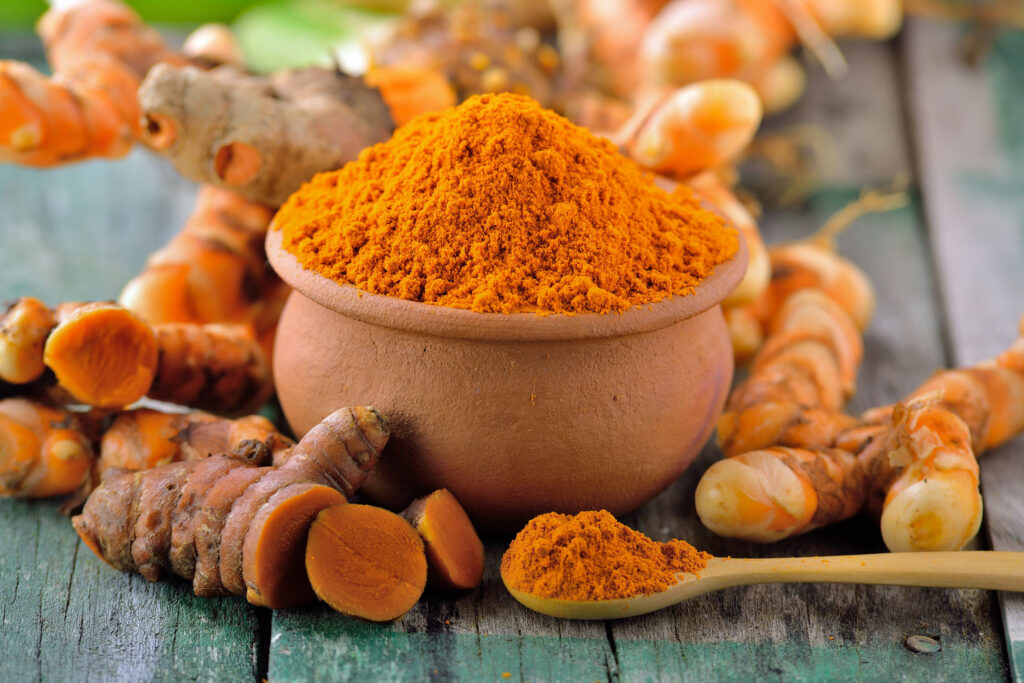Turmeric, Diabetes, and Why CurcuRouge® in ACEND Could Be a Superior Choice

September 29, 2025
Contributing Authors: Team TRILITY / ACEND
Type 2 diabetes remains one of the fastest-growing global health challenges. According to the World Health Organization, more than 800 million people worldwide now live with diabetes, with type 2 accounting for roughly 95% of cases. Beyond blood sugar imbalances, weight gain and central obesity amplify risks for heart disease, kidney dysfunction, and vision loss. That’s why safe, natural strategies to improve weight control and metabolic health are drawing so much attention.
A new meta-analysis published in Nutrition & Diabetes reviewed 20 randomized controlled trials and found that turmeric and its active compound, curcumin, helped people with prediabetes and type 2 diabetes reduce body weight, waist circumference, and fat mass. While the reductions were modest—about 2 kg (5 lbs) of weight loss and up to an inch off the waist—such changes can have significant impacts on cardiovascular and metabolic risk when scaled to entire populations.
Why Curcumin Matters for Diabetes
Curcumin, the bright yellow polyphenol in turmeric, has been studied extensively for its anti-inflammatory and antioxidant effects. For people with diabetes, it may influence several critical mechanisms:
- Improved insulin sensitivity by modulating inflammatory pathways like NF-κB and cytokines such as TNF-α and IL-6.
- Enhanced lipid metabolism, supporting reductions in fat mass and central obesity.
- Reduced oxidative stress that damages pancreatic β-cells, which are essential for insulin production.
- Potential cardiovascular protection, critical given the overlap between diabetes and heart disease.
Collectively, these mechanisms suggest that curcumin may be more than just a spice—it’s a clinically relevant compound for metabolic health.
The Bioavailability Problem
Despite its promise, curcumin is notoriously difficult for the body to absorb. Standard turmeric powder often passes through the gut with minimal uptake. Clinical studies suggest that to achieve therapeutic plasma levels, curcumin must be formulated in ways that increase its bioavailability. Without this, much of its potential benefit is lost.
This is where ACEND’s patented form of curcumin, CurcuRouge®, comes into play.
CurcuRouge®: A Next-Generation Curcumin
CurcuRouge® is a clinically optimized curcumin designed to overcome absorption barriers. It uses a micellar matrix delivery system, embedding curcumin into natural acacia gum micelles, which dramatically enhance solubility and bioavailability. Research on micellar curcumin formulations shows up to 185-fold improvements in plasma concentration compared to standard curcumin extracts.
That means the body can actually access and utilize curcumin at lower doses, improving safety, tolerability, and effectiveness. For individuals with diabetes—who often juggle multiple medications—this efficient delivery system offers an important advantage.
How ACEND Supports Metabolic Health
ACEND is a broad-spectrum medical food formulated to target chronic inflammation, mitochondrial function, and metabolic resilience. Alongside CurcuRouge®, ACEND incorporates other clinically validated compounds that work synergistically to support people at risk for or living with metabolic syndrome and type 2 diabetes:
- Epicatechins from green tea to improve vascular health and reduce “inflammaging.”
- Dihydroquercetin (DHQ) and grape seed proanthocyanidins to strengthen endothelial function and improve circulation.
- Bacillus coagulans probiotic to restore gut microbiome balance, a critical factor in insulin resistance.
- Betaine and NAC (N-acetylcysteine) to improve methylation and glutathione pathways, reducing oxidative stress.
When combined with CurcuRouge®, these ingredients address multiple aspects of metabolic health—from glucose control and fat metabolism to gut and mitochondrial function.
Why CurcuRouge® May Be the Superior Choice
Compared to generic turmeric or curcumin supplements, CurcuRouge® stands out for three key reasons:
- Bioavailability: Micelle-based delivery ensures that curcumin reaches therapeutic levels in the bloodstream.
- Consistency: Standardized extracts with proven pharmacokinetics mean predictable outcomes, unlike variable turmeric powders.
- Synergy: Within ACEND’s formulation, CurcuRouge® works alongside a full suite of anti-inflammatory and antioxidant compounds, amplifying benefits for people with diabetes or metabolic syndrome.
So while turmeric supplements may offer modest weight-management benefits, CurcuRouge® provides a scientifically advanced, clinically practical way to harness curcumin’s power for real-world outcomes.
Looking Ahead
Diabetes is not just about blood sugar—it’s about the cascade of inflammation, weight gain, and vascular complications that come with it. Small improvements, like a 5-pound reduction in body weight or an inch off the waistline, can dramatically reduce risks of heart disease and kidney failure.
Therefore, adding an optimized, clinically validated curcumin such as CurcuRouge® in ACEND may represent one of the most effective, drug-free strategies for people seeking to manage diabetes and metabolic syndrome more holistically.
References
- Azadbakht L, et al. Nutrition & Diabetes. Meta-analysis of turmeric/curcumin supplementation on obesity indicators in diabetes (2025).
- Hewlings SJ, Kalman DS. Curcumin: A review of its effects on human health. Foods. 2017;6(10):92.
- Gupta SC, et al. Multitargeting by curcumin as revealed by molecular interaction studies. Nat Prod Rep. 2011;28(12):1937-55.
- Tomeh MA, et al. Curcumin and its formulations: Potential anticancer applications. Int J Mol Sci. 2019;20(4):1033.
- Schiborr C, et al. Oral bioavailability of curcumin from micronized powder and micellar formulations in healthy humans. Mol Nutr Food Res. 2014;58(3):516-27.
Other articles you may enjoy
- Metabolic Syndrome and Parkinson’s: Can ACEND Bridge the Gap?
- Epicatechin and Heart Health: Cocoa’s Secret Weapon Against Aging
- Microbiome, Mitochondria, and Chronic Inflammation: The Hidden Trifecta
Note: Always consult with a healthcare professional before considering any treatment options or significant dietary changes.